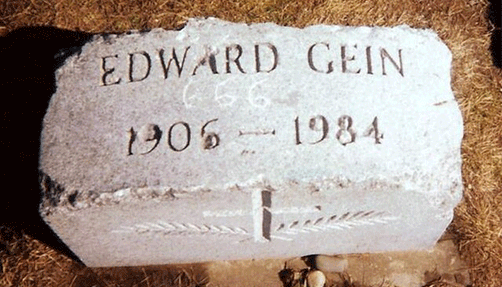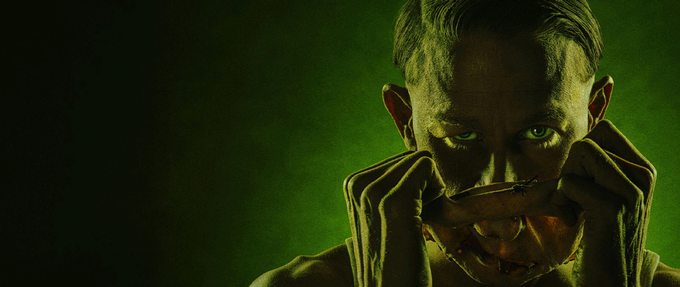The subject of the latest season of Ian Brennan and Ryan Murphy’s Monster series for Netflix, this is far from the first time Ed Gein’s exploits have been brought to the screen in a highly fictionalized format.
As seen in the series, Gein provided a partial inspiration for such classic movies as Psycho and The Texas Chain Saw Massacre, making him one of the most famous (and most mythologized) killers in American history.
But who was Ed Gein and what did he really do?
Who is Ed Gein?
Born in 1906, Ed Gein was, by most accounts, a soft-spoken man who spent most of his life on his family farm in Plainfield, Wisconsin, which would soon become notorious as a den of horrors.
In 1945, Gein’s mother, Augusta, died. She was his last surviving family member, and her death left Gein alone on the farm.\
In the words of writer Harold Schechter, Gein had “lost his only friend and one true love. And he was absolutely alone in the world.”
After that, his crimes began.
What did Ed Gein do?
A graphic novel about Gein’s crimes written by Schechter and comic artist Eric Powell is entitled Did You Hear What Eddie Gein Done?
On the morning of November 16, 1957, Bernice Worden went missing from the hardware store she owned in Plainfield. Worden’s son was the deputy sheriff, and when he came to look for her, he found the cash register open and bloodstains on the floor.
An investigation pointed to Ed Gein as the last customer to have been in the store, leading to Gein’s arrest at a local grocery store. When authorities searched his farmhouse, they discovered Worden’s headless body, “dressed out like a deer” in the shed.
But that was far from all. Within the house of horrors, they found human skulls, lampshades, and wastebaskets made from human skin, masks made from women’s faces, and much more.
How many people did Ed Gein kill?
Upon his arrest, Gein confessed to two murders. Besides Bernice Worden, he also admitted to killing Mary Hogan, a local tavern-owner who had been missing since 1954 and whose head was among those found in Gein’s house.
So, where did the rest of the bodies and body parts come from?
In addition to the two murders, Gein confessed to digging up nine graves between 1947 and 1952, making as many as forty nocturnal visits to local cemeteries and exhuming the bodies of women, which he then took either in whole or in part.
Besides the various grisly trophies found throughout his house, Gein was using the bodies to create a “woman suit” in order to “become his mother – to literally crawl into her skin,” as one writer put it.
Though Gein confessed to only two killings—and was only tried for one—he was linked to several others, including the disappearance of 8-year-old Jean Weckler in 1947, 14-year-old Evelyn Hartley who went missing while babysitting in 1953, Victor Travis and Raymond Burgess, who disappeared while hunting near Gein’s property, Gein’s neighbor James Walsh, and even the death of his own brother, who was found dead after a fire on their property in 1944.
During his trial, Gein’s psychiatrist concluded that Gein’s violence was only directed at women who reminded him of his mother, and lie detector tests seemed to indicate that Gein was not responsible for the other disappearances with which he was linked.
However, some psychiatrists such as George Arndt have suggested that it was at least “possible and likely” that the death of Gein’s brother Henry was “the ‘Cain and Abel’ aspect of this case.”
Was Ed Gein a cannibal?
Ed Gein’s proclivities towards the bodies he exhumed seemed to be inspired, in part, by accounts of Nazi atrocities, including the idea of making lampshades out of human skin.
Was he driven by some more primal impulse, however? Over the years, Gein has frequently been described as both a cannibal and a necrophiliac—though he has denied both, saying that the bodies “smelled too bad.”
Nonetheless, it seems clear that there was probably a certain psychosexual element to his bizarre crimes, whether this element was ever physically acted upon or not.
As for whether he ate his victims, some accounts suggest that Bernice Worden’s heart was found in a boiling pot on Ed Gein’s stove – Schechter says instead that it was in a plastic bag next to the stove.
Meanwhile, following his crimes, “neighbors wondered what had been in the packages of fresh venison that he’d so generously brought them.”
Gein was ultimately diagnosed with schizophrenia and declared mentally unfit to stand trial. Therefore, it is impossible to ever really know exactly what he did, or to whom.
How did Ed Gein die?
After his trial, where he was declared “not guilty by reason of insanity,” Gein spent the rest of his life in a mental hospital, first the Central State Hospital for the Criminally Insane (what is now the Dodge Correctional Institution) and then Mendota State Hospital (now the Mendota Mental Health Institute), where he died of complications from lung cancer in 1984—meaning that he lived long enough to see his crimes immortalized (and fictionalized) on screen many times.
He was buried between his parents and brother in Plainfield Cemetery, where his grave was initially marked by a headstone, which was steadily vandalized until it was finally stolen altogether in 2000.
It was recovered the following year in Seattle, Washington, and is now in the possession of the Waushara County Sheriff’s Department. Gein’s grave has been left unmarked—so as to deter further vandals and souvenir seekers.

Bryanwake / Wikimedia Commons
Photo Credit: Bryanwake / Wikimedia CommonsWhere can I watch Monster: The Ed Gein Story?
The latest series to retell and fictionalize Ed Gein’s exploits stars Charlie Hunnam as Gein, and can be seen streaming now on Netflix.
Though it has been criticized for not sticking very closely to the facts of the case, Monster is only the latest in a long line of fictionalized versions of Gein’s story, including Psycho, Deranged, The Texas Chain Saw Massacre, Buffalo Bill in Silence of the Lambs, and elements of Rob Zombie’s House of 1000 Corpses, to name a few.
“Before Ed and Psycho,” Powell and Schecther write in Did You Hear What Eddie Gein Done, “every movie monster tended to be from somewhere else: Transylvania, Germany, England… or outer space.
In his incarnation as Norman Bates, Ed Gein introduced something new and revolutionary to the big screen: the all-American monster. The "terror next door.”
It may be that we’ve never been the same since…
Trailer for Netflix's Monster: The Ed Gein Story
Featured still from "Monster: The Ed Gein Story" via Netflix.
